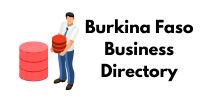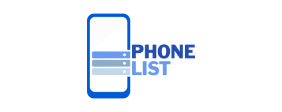Are you looking for the ultimate WordPress security guide? It’s important to keep your WordPress website secure. You should take all the necessary precautions to protect your website from malicious hackers, spammers, and intruders. Securing your website may seem like a daunting task, especially for beginners, but it’s actually not.
In this article, we’ll share our ultimate WordPress security guide so you can easily secure your website. Since this article is quite long, here’s a table of contents to help you navigate through the steps we’ll cover:
Table of Contents: WordPress Security Guide
- Is your WordPress site at risk?
- The easiest way to secure your website? Use the best WordPress security plugin
- Choose a secure hosting for WordPress
- Use strong and unique passwords
- Choose a Strong WordPress Admin Username
- Follow WordPress plugin and theme best practices
- Keep your WordPress site up to date
- Install a WordPress Backup Plugin
- Limit login attempts
- Add Security Questions to WordPress Login
- Automatically log out idle users
- Disable file editing on your site
- Signs Your WordPress Site Has Been Hacked
- What to do if your website has been hacked
Now, let’s begin.
Is your WordPress site at risk?
If you run a small business website or want to start a personal WordPress blog , you might think your site isn’t at risk. But it is. Every website is at risk of being hacked, from giant e-commerce sites to small, personal sites.
You might also think that since WordPress is the most popular platform for building websites, your site is completely secure. But that’s not entirely true either. While the core WordPress software is very secure, there are still other steps you need to take to further protect your site. Plus, WordPress’ popularity is partly what attracts these cybercriminals to your site. Just take a look at some of these WordPress statistics that show just how important it is to secure your WordPress site:
- 83% of all CMS-based websites that were hacked recently were running WordPress, which makes sense since WordPress holds 60% of the CMS market share. (WPBeginner)
- Hackers target WordPress sites large and small, with over 90,978 attacks occurring every minute (WPPlugins ).
- The four most common WordPress malware infections are Backdoors, Drive-by downloads, Pharma hacks, and Malicious redirects. (Smashing Magazine )
- Google blacklists about 20,000 websites for malware and about 50,000 for phishing every week. (WPBeginner)
- Wordfence has blocked 9,495,478,648 attacks on WordPress sites. (Wordfence )
As you can see from these statistics.
Anyone with a WordPress site is at risk of being attacked, which makes it extremely important to strengthen the security of your WordPress site.
A hacked website can cost you a lot of money and damage your business reputation. If you are selling products online or collecting online payments and sensitive information from your customers, protecting your website should be a top priority. Hackers can steal your customers’ private information, passwords, credit card information, and more.
You don’t just have to worry about confidential information being stolen, either. Hackers can also take over your website and its content to install malicious software and may even distribute malware to your users. They may even demand a ransom to regain access to your own website.
Some hackers don’t even need a reason to attack your website, some of them do it just for “fun”.
Securing your WordPress site isn’t something you want to overlook. There are a number of easy steps you can take, even if you’re not a tech-savvy person, to make your WordPress site hacker-proof. So, let’s dive into the first easy step of our WordPress security guide.

